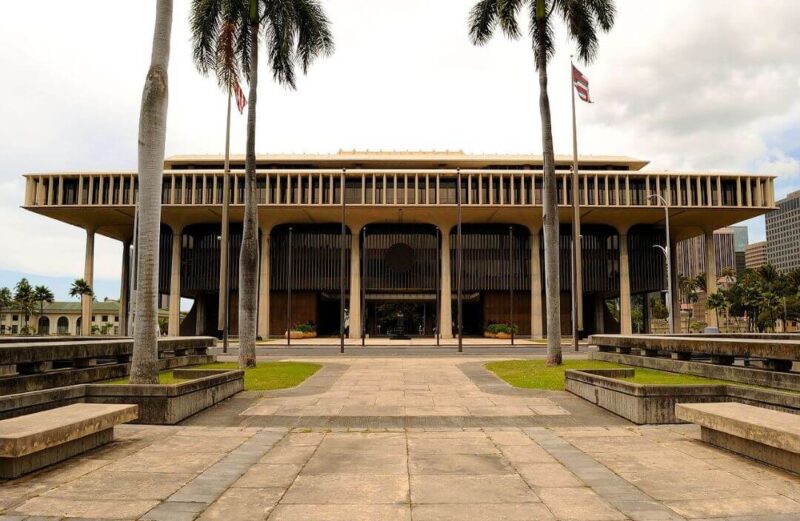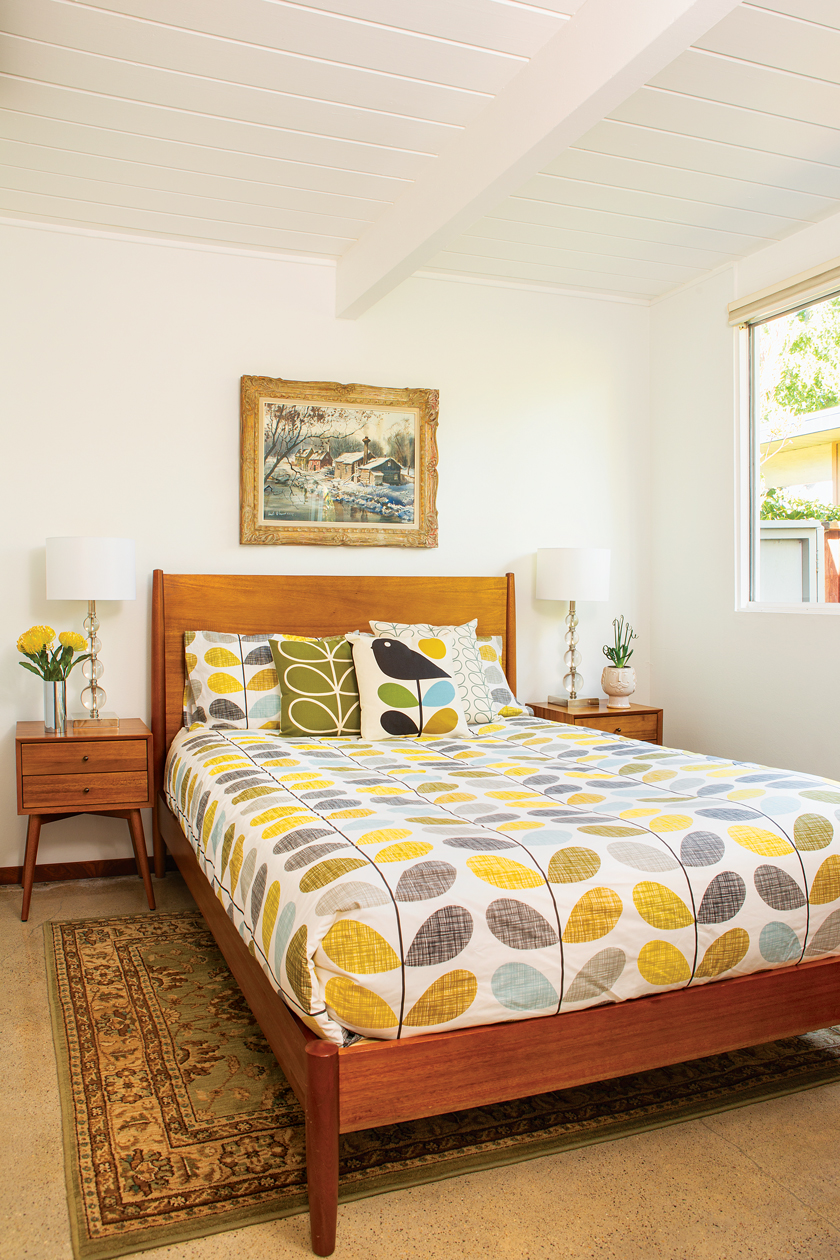One of the most iconic and surprising buildings in Hawaii is the State Capitol Building in Honolulu. This structure stands out both for the distinctiveness of its Hawaiian international style architecture, and for its startling design.
Typically, when we picture state capitol buildings, we envision more traditional structures, often neo-classical and frequently capped with characteristic domes. The Hawaii State Capitol Building defies our expectations with its bold modernist architecture.

As you can see, there is no dome on Hawaii’s capitol building. With its modernist style, you might not even guess it is a capitol unless you already knew. As you will see though, the unusual style choices that went into the capitol’s design were anything but random.
A Symbolic Tribute in Design to Hawaii’s Culture and Natural Splendor
The Hawaii State Capitol Building was designed by Belt, Lemmon & Lo and architect John Carl Warnecke. As a student at Harvard, Warnecke had a chance to learn directly from Bauhaus School founder Walter Gropius. Bauhaus influences are prominent in his works.
Contextualism played a large part in Warnecke’s approach to design as well. In other words, he believed that the context of a building’s surroundings should influence its design.
Docomomo US writes, “The Capitol Building was the largest architectural job ever undertaken in Hawaii at that time. The construction documents included 500 drawing sheets and 350 pages of specifications. A team of about 40 architects and engineers worked to complete the plans.”

Every detail of the building in some way reflects the culture, geography or ecology of the Hawaiian islands. 40 slender columns tower 60 feet around the perimeter of the façade, fanning out seamlessly into the overhang they prop up. This shape is meant to mirror that of the royal palm trees that grow on the islands.

Other aspects of the building also have symbolic significance. For example, the reflecting pools around it are meant to evoke images of the Pacific Ocean. The walls of the legislative chambers have a conical shape, putting legislators and guests in mind of volcanoes. Many motifs in the structure and landscaping repeat in sets of four, representing the island gods Kukailimoku, Kane, Lono and Kanaloa.
A Unique Open-Air Layout with a Majestic Natural “Dome”

There is a specific reason this Capitol lacks a dome. Actually, in a way, it does have a dome. But the dome is intended to be the sky itself. That is why the center of the structure is an open courtyard. This same sky extends all across Hawaii, of course. In doing so, it unites the Capitol Building and the islands themselves, a reminder that everyone who lives in Hawaii is taking part in civic affairs under the same “dome.”

One of the most unique features of the building’s layout is the choice to incorporate open-air walkways around the courtyard rather than closed hallways. In the photo above, you can easily make out the doors to individual offices. As government workers go about their days, they can enjoy Hawaii’s temperate climate and stay connected to the islands, ocean and citizens they serve.
If you enjoyed learning about the architecture of Hawaii’s capitol building, you may also like Retro Road Trip: Valley of the Temples Memorial Park and Boston City Hall: A Controversial Brutalist Landmark. And of course, don’t forget to follow us on Instagram, Facebook and Pinterest for more Mid Century Modern inspiration!












